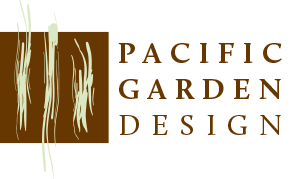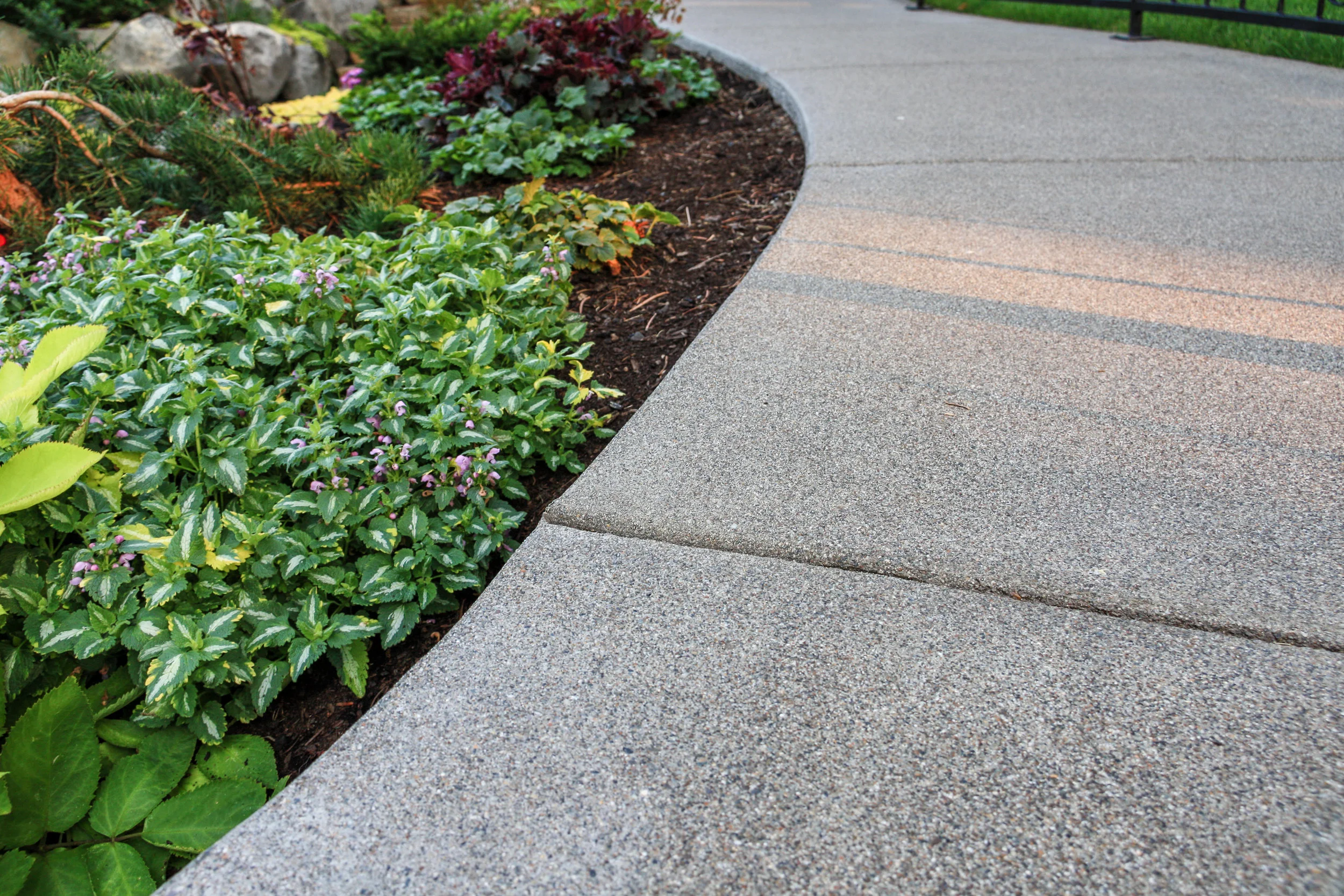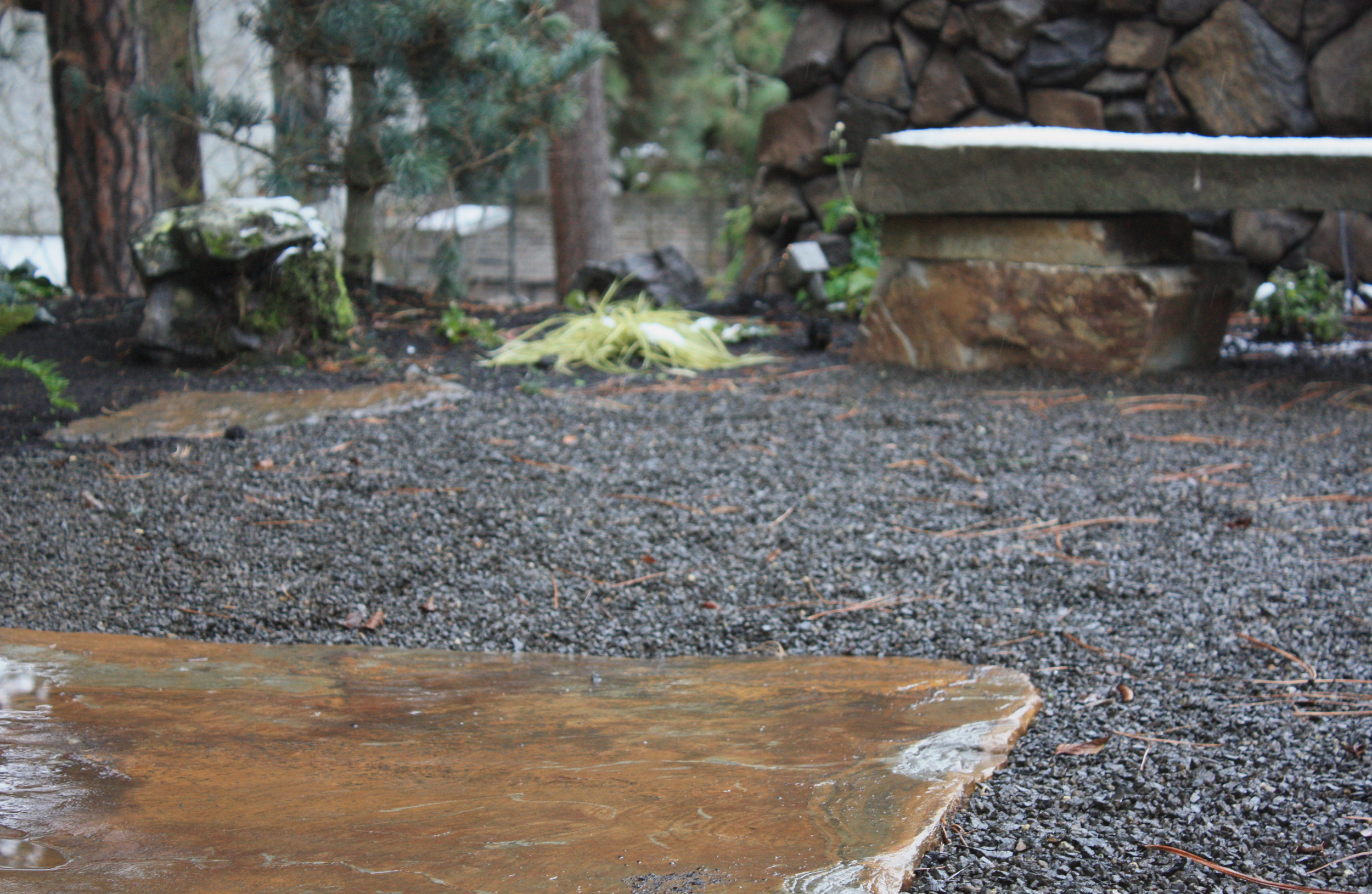Concrete is used more than any other material worldwide because of its strength and durability. At its most basic, concrete is a mix of aggregate and cement which is mixed with water and poured into forms to cure. The exact materials and ratios used can impart a wide range of characteristics, making concrete an incredibly versatile material. In the landscape, the most obvious characteristic of a concrete installation is how it is finished after it is poured into a form. There are four typical outdoor finishes: broom-finished, exposed aggregate, sandwashed, and stamped.
Broom-Finished Concrete
A gray, broom-textured concrete is the most basic outdoor concrete finish. It is commonly used for sidewalks and driveways and, as the name suggests, involves dragging a broom across the surface of the wet concrete to give it a ridged texture. Its popularity lies in the fact that it is a durable and economical finish, as well as one that provides good traction in wet conditions. For a little extra interest, a colored pigment can be mixed into the concrete to give it a tone other than the basic gray.
Exposed Aggregate Concrete
To give concrete an exposed aggregate finish, the surface of the wet concrete is treated with a chemical that stops the outer layer of cement from curing. That outer layer is then washed off, revealing the aggregate within the concrete. Exposed aggregate concrete features a bumpy, pebbled texture, which creates excellent traction when wet. The aggregate, however, often has sharp or pointy edges which can dig into bare feet, making it an uncomfortable choice for a backyard patio. Exposed aggregate is also prone to damage, as the protective cement that binds the aggregate together has been removed from the surface of the concrete.
Sandwashed Concrete
Sandwashed concrete undergoes a similar finishing process as exposed aggregate, but the composition of the concrete mix is different. For a sandwash finish, the mix will have a higher proportion of small sand-sized particles versus pebble-sized particles for exposed aggregate. When the top layer of cement is washed off, the concrete is left with a uniform texture much like the surface of sandpaper. The surface is comfortable to walk on while still offering excellent traction, and the unobtrusive finish is suitable for any style of landscape.
Stamped Concrete
Because of the extensive process for finishing stamped concrete, its final appearance can vary. Stamped concrete typically has a pigment mixed into the concrete itself to give it a base color. Additional pigments are often applied to the surface of the concrete to give it depth and character, and then large rubber stamps are pressed into the wet concrete. The concrete takes on the texture of the stamps, which can be patterned with organic or geometric shapes that mimic stone or other material. The stamping process gives the concrete a very smooth surface that can be slippery when wet, however, which makes stamped concrete a poor choice for walkways or pool decks. The smooth surface also shows wear much more easily than a more textured finish, which may give the concrete a shorter aesthetic lifespan.
New concrete work is a big investment, and it’s the sort of project that you only get one chance to do right. If you’re considering concrete patios or walkways, get in touch with us to see what our expert concrete finishers can do for your landscape.






